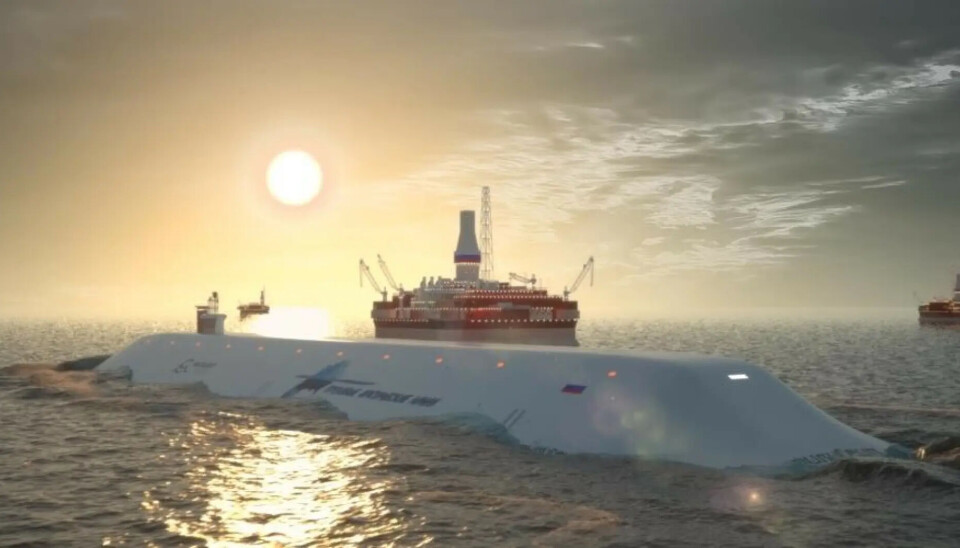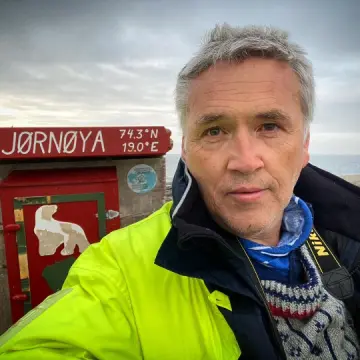
Gazprom teams up with Kurchatov Institute
“Fantasy project,” Nikitin says about nuclear gas carrier submarine
Russia’s leading research institute for development of nuclear energy has reached an agreement with Gazprom to develop a submarine for transport of liquid natural gas along the Northern Sea Route.
Aleksandr Nikitin with the Bellona foundation is halfway laughing when asked about safety aspects on Russia's planned civilian nuclear-powered submarine for bringing gas to markets in Asia. He does not at all believe the project will surface.
Design work has begun, said president of the the Kurchatov Institute, Mikhail Kovalchuk. He presented the news at the OMR 2024 forum devoted to development of shipping and high-tech equipment for the Arctic taking place in St. Petersburg this week.
The idea to conquer difficult ice conditions by simply sailing under it is not new. Both the Kurchatov institute and Malachite Design Bureau have previously discussed the plan of creation of a reactor-powered submarine for transport of hydrocarbons from the Arctic shelf.
This, however, is the first time the designers announce an agreement of intent with Gazprom, the Kremlin mjority-owned energy corporation.
Gazprom director Alexei Miller and Kurchatov Institute chief Kovalchuk had a working meeting on October 11 where the implementation of nuclear power project for Russia’s Arctic shelf was discussed, the energy-online Neftegaz reported.
Gazprom is in deep financial crisis after sales more than halved following Russia’s all-out war on Ukraine. The energy giant lost pipeline gas sales to Europe and faced its first annual net loss in 2023 after decades of making big money.
Gazprom is now ranked as Russia's most unprofitable company.
New markets
New markets are in Asia, but building south- and eastbound pipelines take time and become more difficult as thawing permafrost makes the ground unstable.
A nuclear submarine with giant LNG-tanks can provide year-round transportation from terminals along the north coast of western Siberia, Mikhail Kovalchuk, the Kurchatov director argues.
The Ob Bay, however, is too shallow for such giant submarine to sail submerged. Assistance from icebreakers will therefore still be needed from ports at Sabetta (Yamal LNG) or Gydan (Arctic LNG 2) to deep-sea Arctic waters north of Siberia.
Except the small-scale Portovaya LNG in the Baltic Sea, Gazprom does not have its own LNG production capacities. Today's two LNG plants in the Arctic are operated by Novatek.
Mikhail Kovalchuk claims a submarine will increase safety compared with surface carriers and pipelines. A few of those submarines will be sufficient to transport the same amount of gas as a subsea pipeline can do.
360 meters long
Preliminary design studies suggest the submarine LNG-carrier should be 360 meters, twice the length of the giant Cold War Typhoon-class submarines.
The new subs will be powered by 3 reactors, be 70 meters wide, 30 meters high and have a draft of 12-13 meters. With a capacity of 170-180 thousand tons, the submarines would carry about the same as today’s surface tankers.

Sailing under the ice can be done regardless of climate and weather conditions.
Unlike surface LNG-carriers that have to follow an icebreaker crushing the ice, a submarine can sail much faster eastbound from the terminals in the Ob Bay. A speed of 17 knots, according to the designers.
Fantasy
Aleksandr Nikitin, a nuclear expert that until 2022 chaired the St. Petersburg-based Environmental Right Centre Bellona, describes the plans as fantasies not rooted in reality.
“It lacks calculations on technology, economy and industrial implementation,” Nikitin says to the Barents Observer.
“Russia doesn’t even have basic shipbuilding capacities,” he argues and point to the fact that the country is short of abilities to build basic tankers and dry cargo ships.
“In short, this is nonsense from Kovalchuk,” Nikitin says.
The nuclear safety expert is today based in Oslo and is critical to how war-time Russia is brushing dust off reactor-projects from Soviet times.
Arctic has got an special focus after the state nuclear corporation Rosatom in 2018 became in charge of the Northern Sea Route Directorate, responsible for infrastructure and investments.















